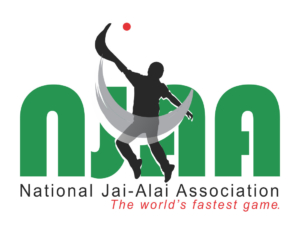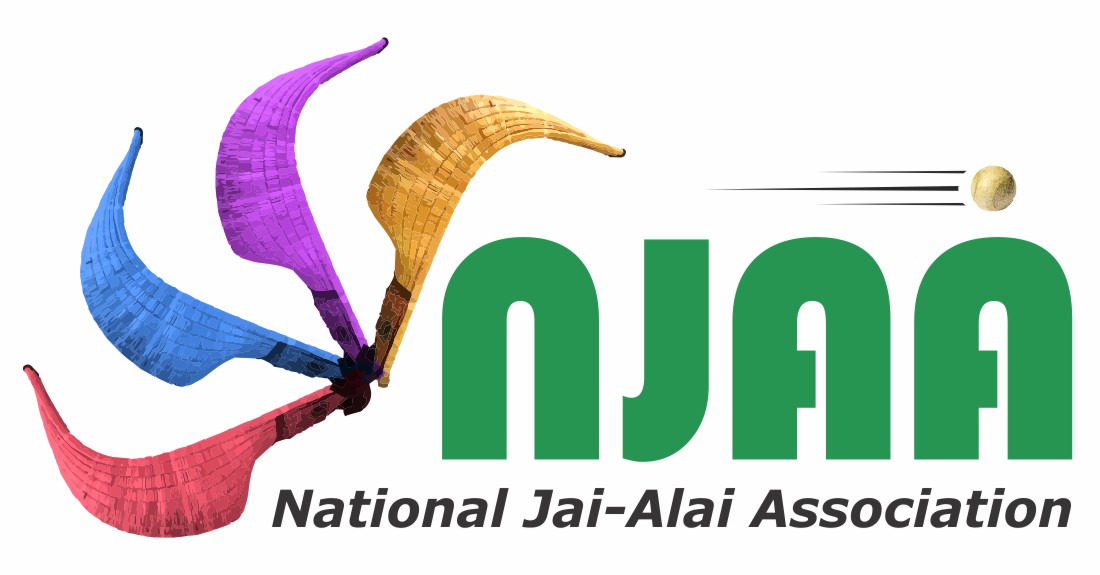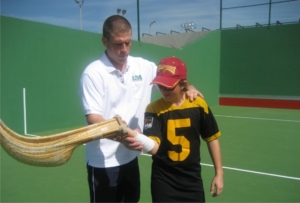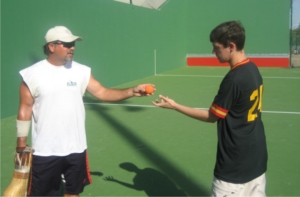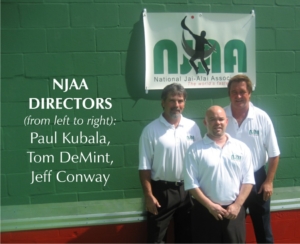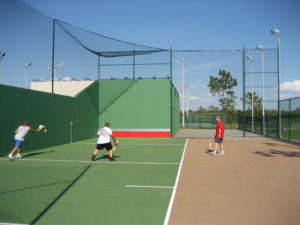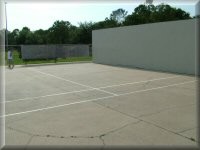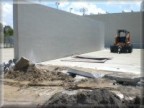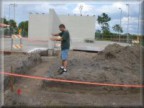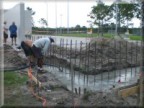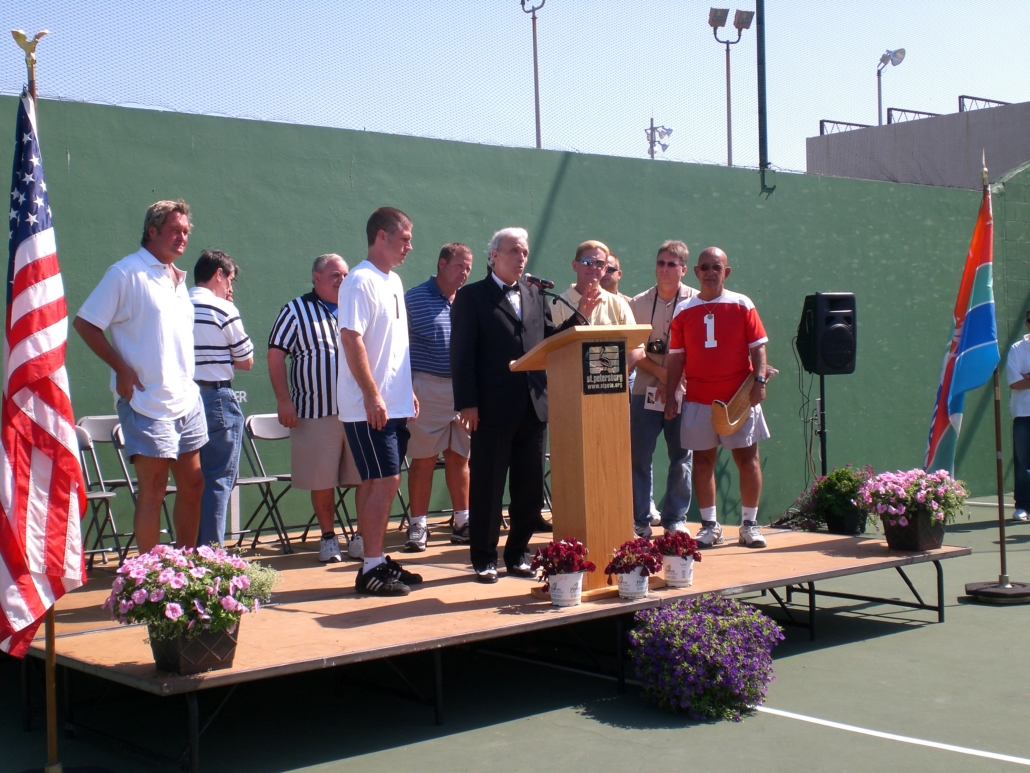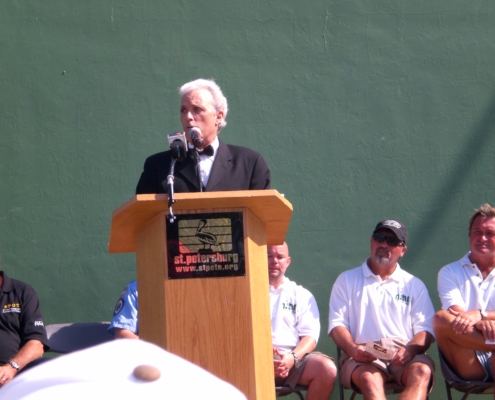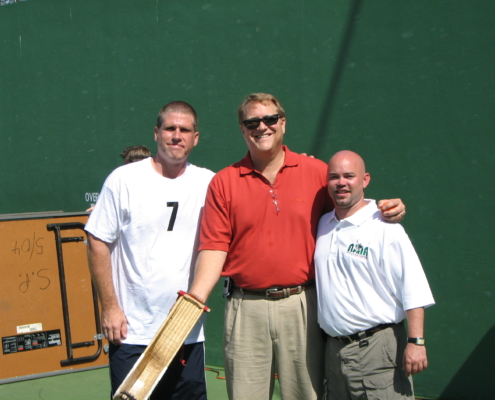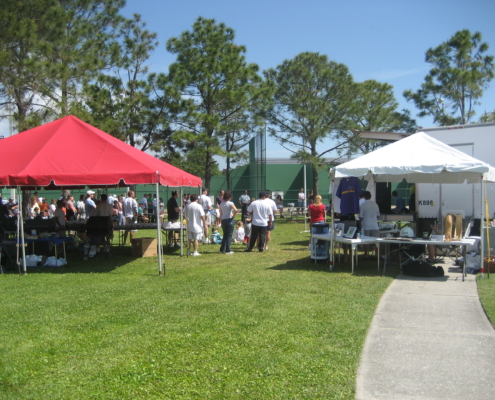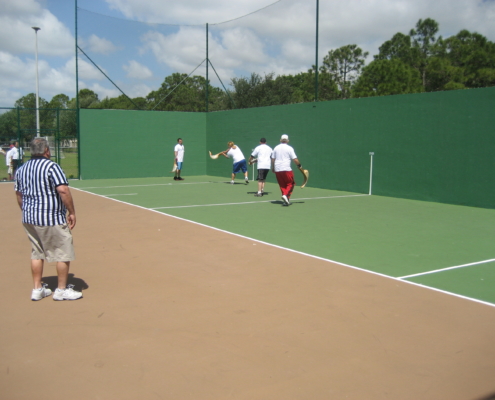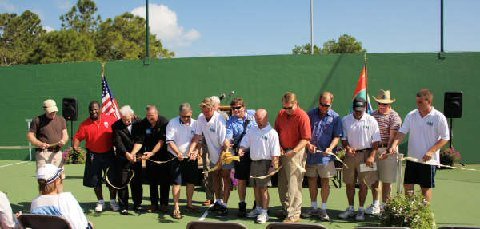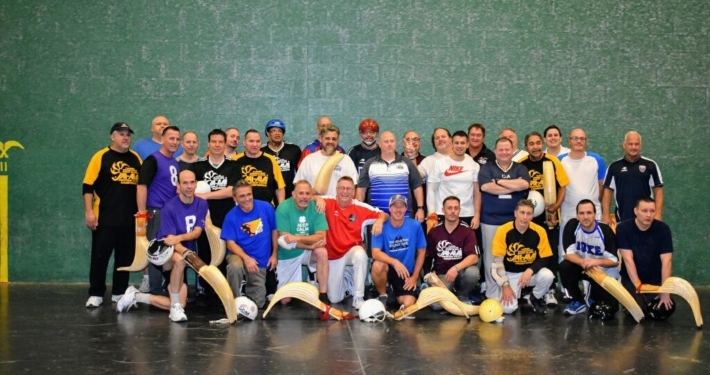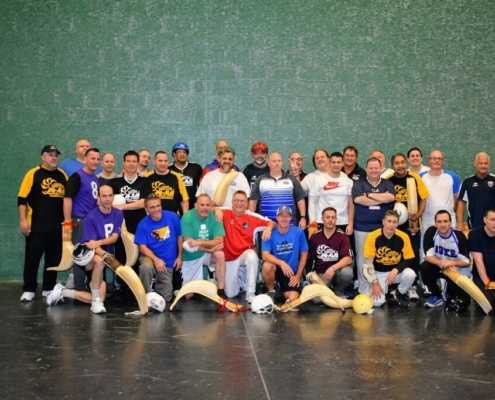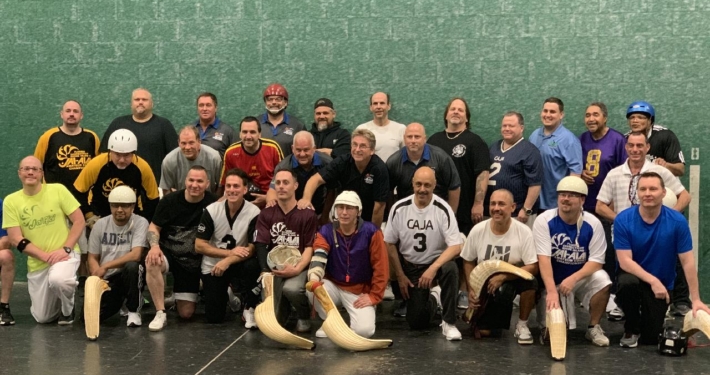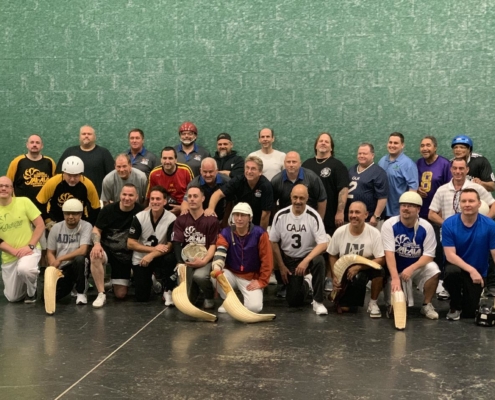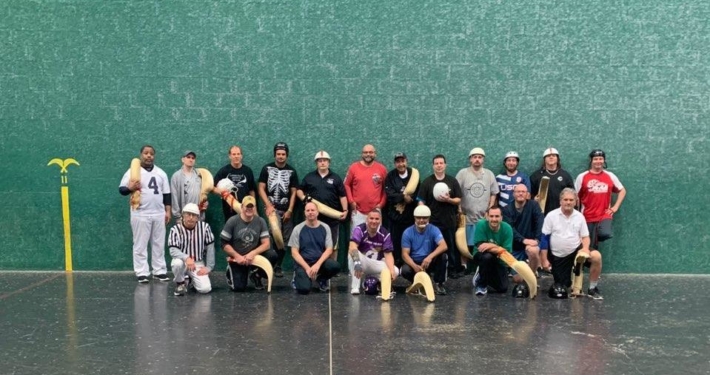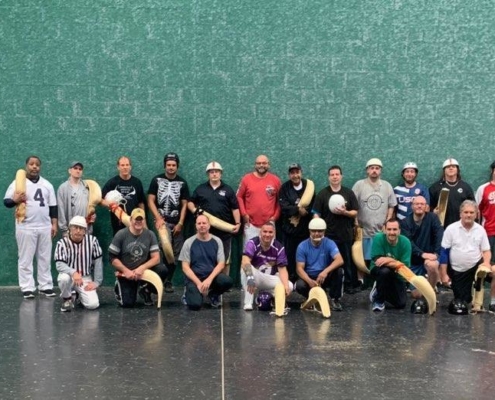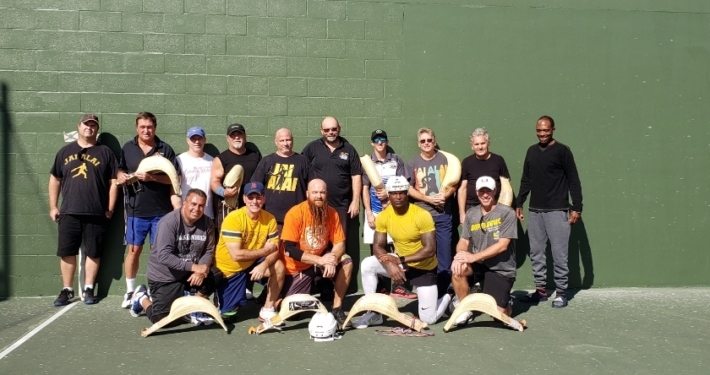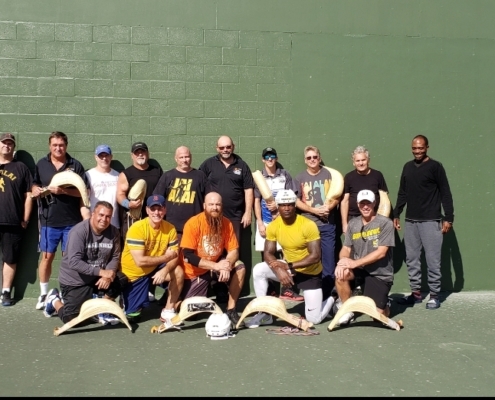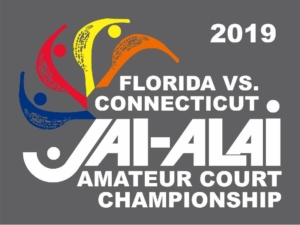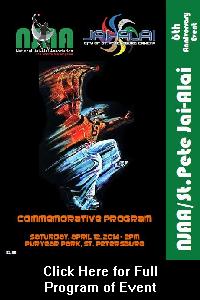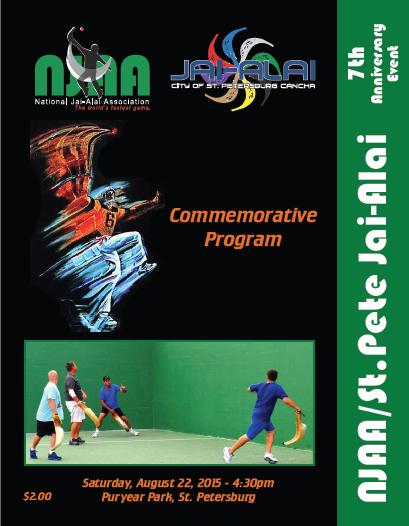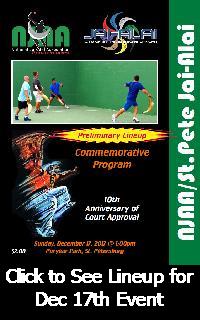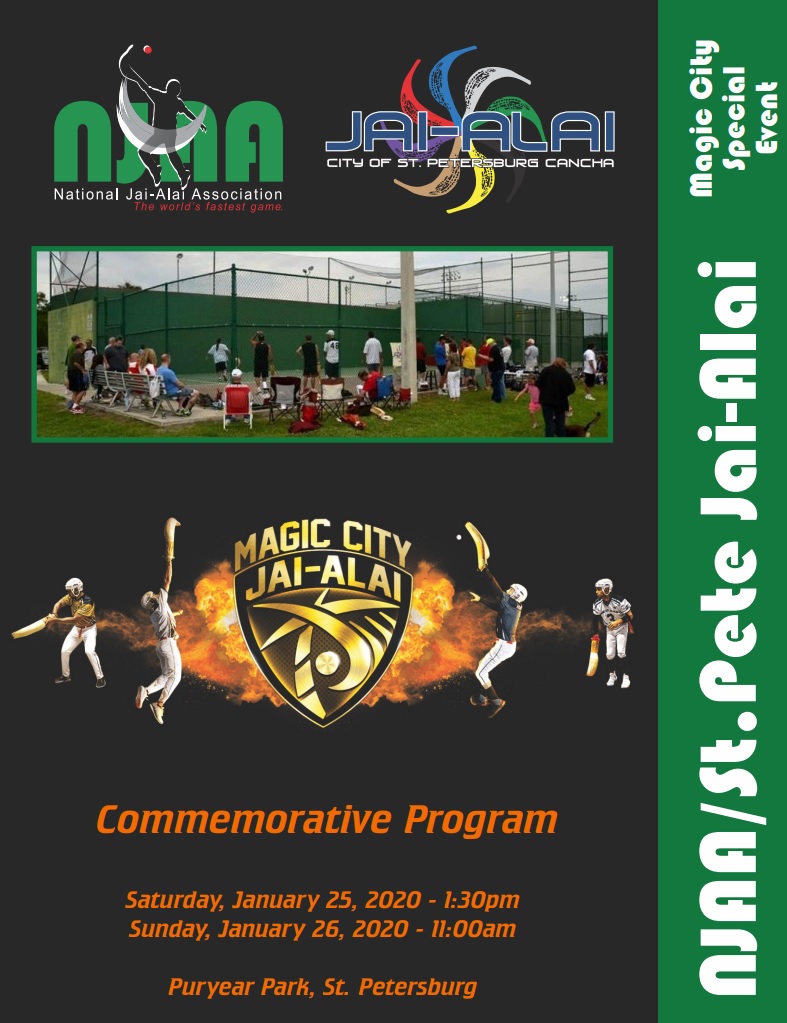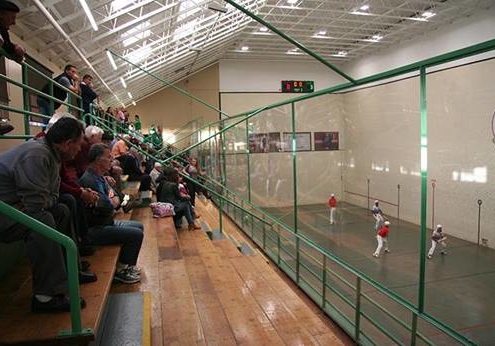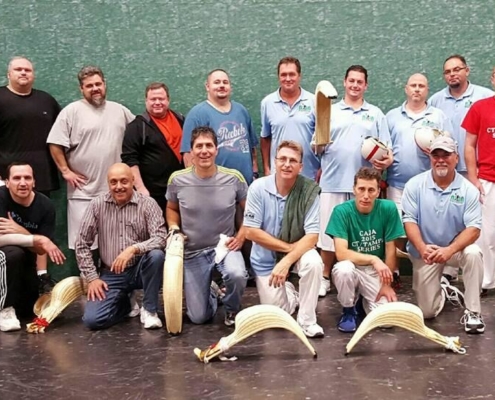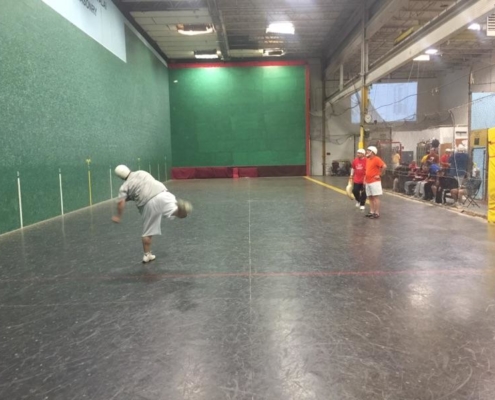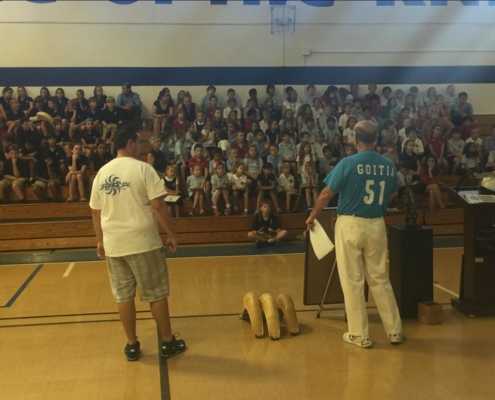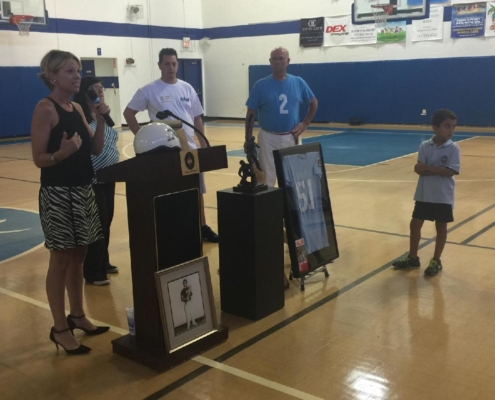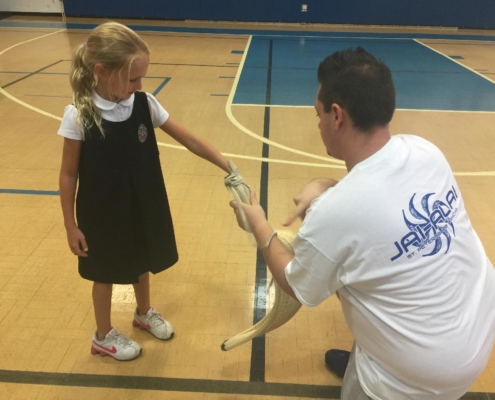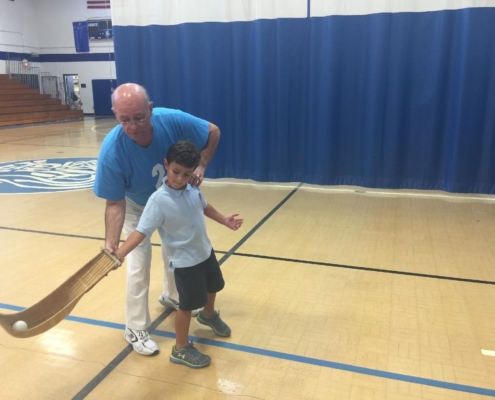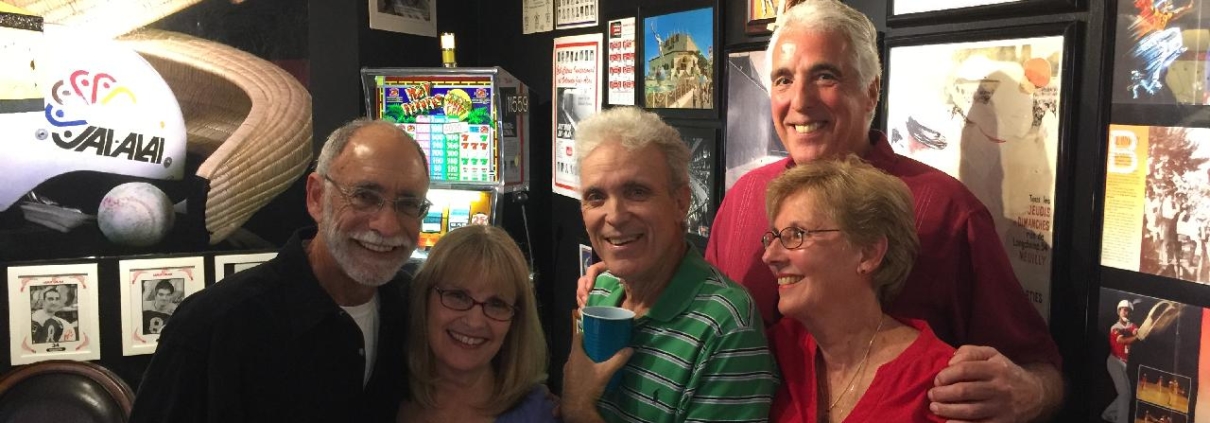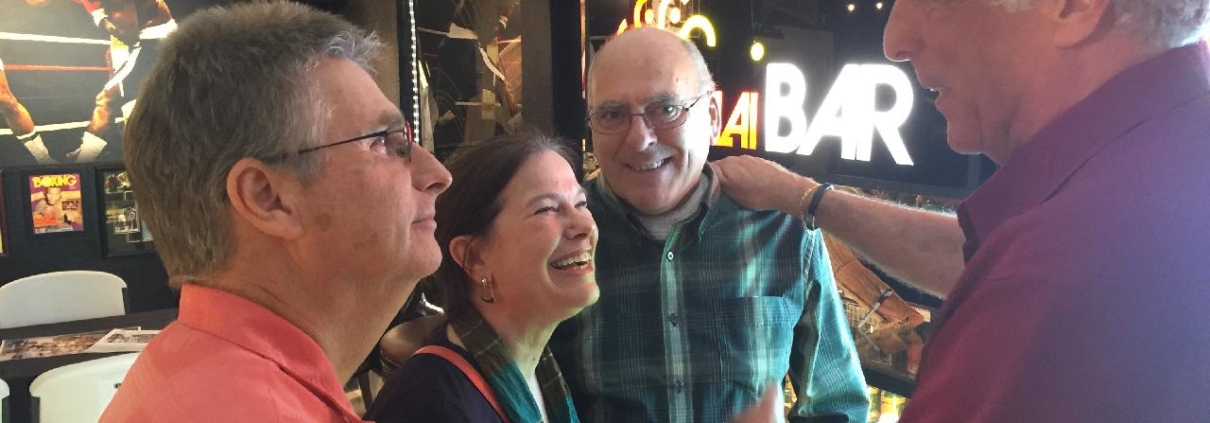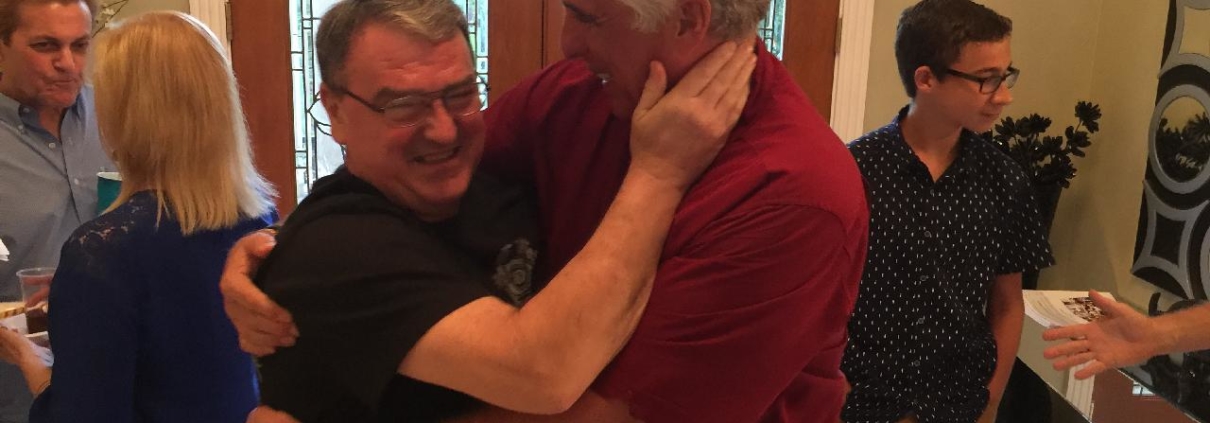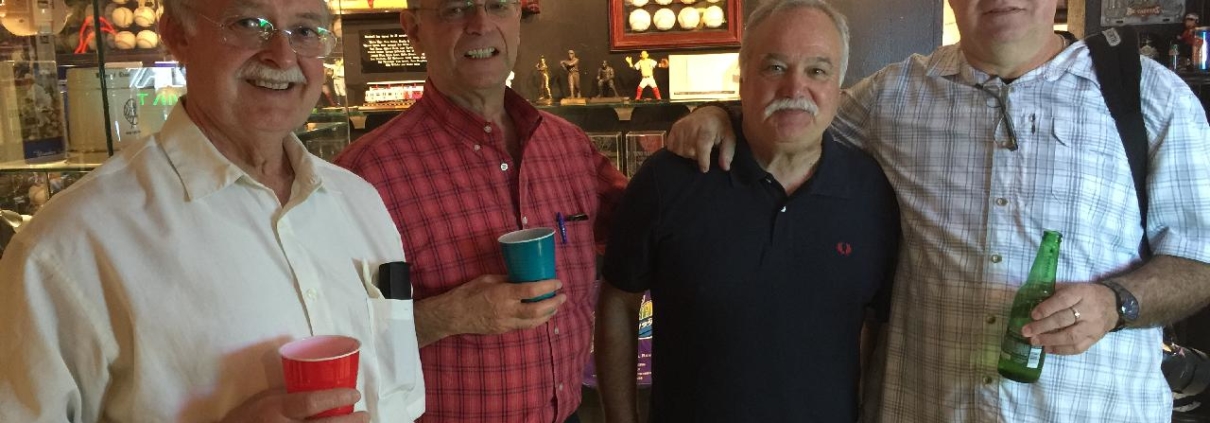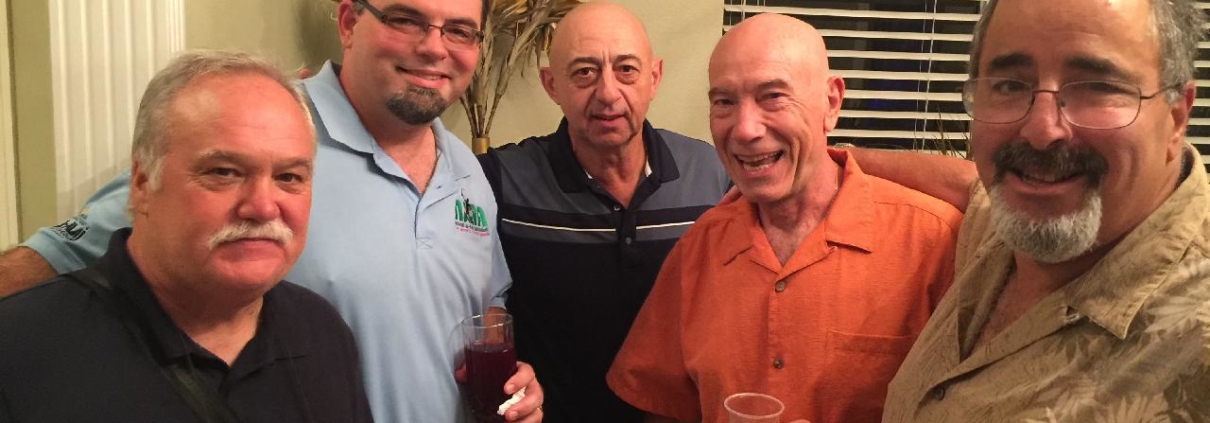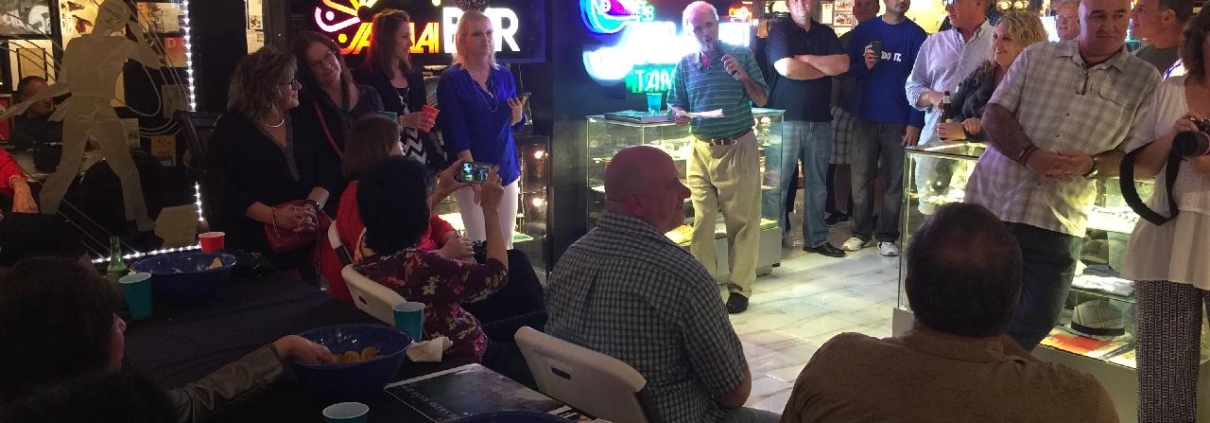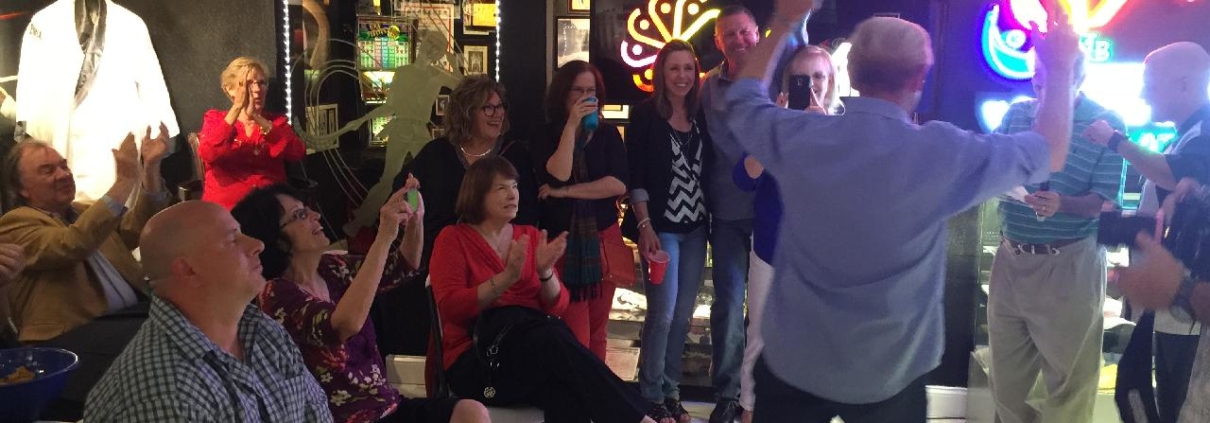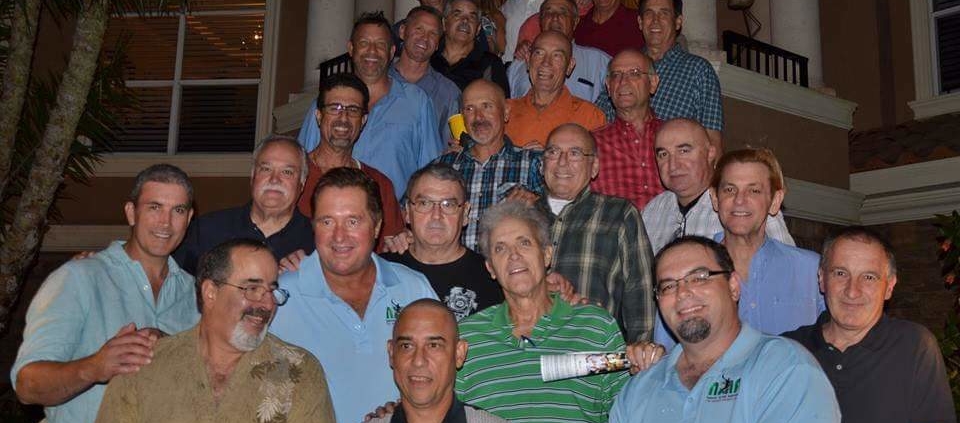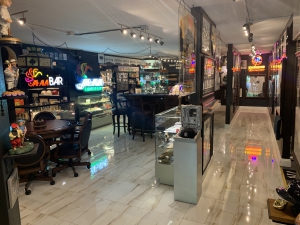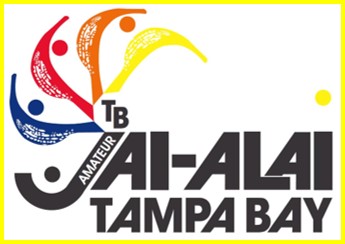NJAA logo from 2007-2020
New NJAA logo
The National Jai-alai Association is devoted to promoting and preserving one of the world’s most ancient sports. Jai-alai offers more excitement, more action, more thrills and more fun than any other sport. It is the world’s fastest ball game.
The NJAA was formed in early 2007 by Paul Kubala, Tom “Corky” DeMint and Jeff “Laca” Conway in St. Petersburg and has accomplished some major achievements over the years.
America’s First Public Jai-alai court
Their first goal was to get a public jai-alai court built in order to showcase the sport. Tampa Jai-alai had closed down in 1998 after an amazing 55-year run, leaving the area without any blueprints of the sport. This group had more interest in the sport itself instead of just a gambling venue. For two decades, a group of devoted amateur and former pro players had been playing off the side wall of a racquetball court at Jack Puryear Park, located in northeast St. Petersburg. Getting a court built would not be easy. Millions of public tennis courts, racquetball, soccer, and basketball courts had been built over the past century, but never a jai-alai court.
But the NJAA had the determination and persistence to make it happen. Well before the NJAA was even formed, Kubala and DeMint had been working with the Edgemoor Neighborhood Association and it’s president, Stan Kordecki, about the idea of converting a couple of small practice walls used for racquetball and tennis into a jai-alai court. The three then approached City Councilman Bill Forster, who represented their District 3 area about the idea. They also pitched the City Parks and Recreation Department about the unique proposition. What they found was some great enthusiasm and support for the idea.
The City of St. Petersburg then made them an offer. Come up with the money it would cost in materials to get it built and the city would supply the labor. The property would then be designated as an official jai-alai court. The Tampa Bay area and the entire USA was about to enter a depression at the time following the real estate collapse a year earlier. Time was of essence and this is when Conway and his company Clearwater Enviro Technologies stepped in with the funds to get it going.
Construction
On June 18, 2007 work began on the America’s first public court. By late August, the court’s basic structure was competed. However, additional funds were needed to make the court safe by adding extensive fencing and netting. Theresa Hilliard, a director of the Edgemoor Neighborhood Association and an employee of the City of St. Petersburg, saw the enthusiasm and the large turnout of players on the new court. She suggested that there was a possibility that funds from the city’s Weeki Wachee fund, which is earmarked for park and recreation projects, could possibly be used to get those additional funds. Talks then went to then City councilman Bill Foster, who pitched the idea to the rest of the city council.
The City Council was already aware of Kubala and DeMint of the Edgewater Neighborhood Association, who spent years working on this project. They even won the prestigious Innovative and Persistence Award at the Mayors 11th Annual Neighborhood Partnership Awards.
On December 6, 2007, Bill Foster and Paul Kubala pitched the City Council on the idea on acquiring the additional funds needed. You can watch this “historic” discussion
(link above left). Then an official vote was taken by the City Council on December 20, 2007 with a “Perfect game!” unanimous 7-0 vote in approval (link above right).
Huge Grand Opening Event
America’s first public court opened on April 19, 2008. Here is the story that ran on the NJAA website the day after the event:
St. Petersburg, FL: A true “Merry Festival” atmosphere took place in St. Petersburg, Florida as the first municipal jai-alai court in the country held its Court Dedication and Grand Opening Saturday morning, April 19, 2008.
Jai-alai fans from as far as Spain attended the event – the first of its kind in the United States. The event was put together by the City of St. Petersburg, The Edgemoor Neighborhood Association and The National Jai-alai Association.
Under clear blue skies, temperatures in the mid 70s, attendees were treated to free Cuban sandwiches, beverages, live bands, a K-9 show, St. Pete Fire Department trucks on site, children’s rides, multiple prizes, the “worlds” longest ribbon cutting ceremony and yes – jai-alai.
A stage and podium was set up on the court, along with 100 seats right on the court. A large sound system and a separate band stage was set back from the court with a full view of the action. St. Petersburg Mayor Rick Baker took a few throws on the court at the very beginning. The Master of Ceremonies, St. Petersburg Parks Director Cliff Footlick, began the ceremony. City Council Chairman James S. Bennett then spoke, followed by Council Member Bill Dudley. The Edgemoor Neighborhood Associations’ Tom DeMint and Stan Kordecki then spoke. Following them was the National Jai-alai Association – Jeff Conway, Paul Kubala and Derek Smith.
Then came the “Jai-alai” portion of the show. Showtime Ring announcer, and former long time Tampa Jai-alai announcer M. Mark Beiro “The voice of Jai-alai” then took stage – dressed in his customary Tuxedo. Beiro explained to the crowd the history of jai-alai and how difficult it is to play the game. Calling St. Petersburg the most “unlikeliest” place to build the first amateur public jai-alai court in the USA, he uttered his coined phase “Bye-Bye from Jai-alai” to “Hello to Jai-Alai”.
The “worlds” longest ribbon was cut by all those that spoke at the ceremony. The court was officially open to the public!
Beiro then introduced all the former jai-alai players in attendance. Among them was 80-year old Alberto Sarmiento, a star player of Tampa Jai-alai (#1 in-the-money) in its first season of 1953-54. He actually served the first ball ever in a doubles game at the fronton. Also introduced on the court was Randy, the first American Jai-alai player ever. Several other players attended – including Pablo, Corky, King, Dennis, Rabak, Brian and Paul.
The “first throw” on the court after the ceremony was done by former city councilman Bill Foster. Foster was the one instrumental informing the mayor and city council about our plans for a jai-alai court and quickly gained their approval. He also helped secure the extra funds needed to complete the court through the Weeki Wachee fund.
The stage and chairs were removed from the court while the 16 players to participate in Game 1 were warming up. Latin music was cranked up over the PA system while spectators enjoyed delicious complementary Cuban sandwiches – compliments of D & D Delight of Tampa. Publix also donated 5 cases of water to help satisfy everybody’s thirst.
Nearly 30 companies sponsored the event, many of which donated gift certificates that were given away as prizes in the raffle drawings. The Riverview Flower Farm, whom Puryear player Thomas is employed by, donated about $1000 in plants that given away to various winners.
The sponsors and prize drawings were announced by Jai a Lou, a card show promoter and an announcer at Dania Jai-alai.
Then the World Jai-Alai’s March Music was played as the first 16 players walked out onto the court and saluted the crowd. The tape of the jai-alai march was supplied by “Big” Dave Lemon of Miami Jai-alai.
Joining the players on stage was Joe LaRosa, the front court referee at Tampa Jai-Alai for 28 years. He would ref the first two games, while Jai a Lou was the official public address announcer.
The first game was played with the first serve appropriately going to the honor of Paul Kubala, who for twenty years had dreamed of this day. LaRosa got to see his son, Chris win the first game with Dave. The trifecta came in at 6-4-3 and paid $288 (just kidding!).
Game two was a singles affair, with Kyle, the 12-year old son of Kubala, the winner!
A live band, “Fall on Purpose” played while attendees enjoyed the free food, beverage and a K-9 live demonstration – in addition to all the prizes.
History was certainly made this morning!
Several TV, radio and newspapers did a story on the jai-alai court. It is estimated that over 500,000 people were exposed to coverage of the St. Pete Jai-Alai court. The jai-alai court was the scene of a live broadcast for over two hours on FOX-13, during “Charlie’s World”, hosted by Charlie Belcher, a two-time Emmy Award winning reporter. Reports also ran on CBS-10 on the 6pm and 11pm newscasts. The St. Petersburg Times, one of the “top 10 newspapers in the country”, ran a featured story on the front page of its “Neighborhood Times” section and in several other sections of the paper for their Clearwater/Palm Harbor/Tampa editions.
Over 15,000 Sanctioned Games Since its Inception.
See how Magicmike’s scoreboard works (Click above)
The NJAA has sanctioned over 15,000 organized games involving hundreds of players since 2008. Their computer expert, “Magic” Mike Berry even devised an elaborate “talking” scoreboard where players names are entered into a roster for any given performance and a cleverly designed program picks the teams by random and assigns the post positions. You can view how it works by hitting the play button in the accompanying link. Using former Tampa Jai-alai announcer Jack Patterson’s voice, the program starts off with the jai-alai march theme and then goes into the announcing of the teams playing any given individual point. When the point is completed, the scorekeeper will enter the post position of the winner of the point. The announcer will then acknowledge this and then announce the next team to follow in the round robin rotation. The program is setup to allow for up to 8 post positions and allows for singles or doubles play. Any amount of points can be entered for up to 21 points to win the game. When game point comes around, “Jack Paterson” will announce that. If they lose, he will say “and the game continues” until the winner is determined. There are also several sound effects like the crowd booing (hit the B button) or the crowd cheering (hit the C button).
Then at the end of the performance, all the stats are fed into the stats page like all the professional frontons do. Players could check their winning percentage and scores of all games played on a daily basis. Well over 1,000 games are played a year using this setup, not to mention thousands of games that are not tracked by others.
Promoting Tournaments Throughout North America
Over the years, the NJAA has promoted or produced several large amateur/ex pro tournaments from yearly events at Puryear Park, to tournaments at Matt’s Court in Berlin Connecticut, in Mexico City and San Francisco. Tournaments in the new Cancun venue will be added when the COVID-19 pandemic is gone. The events are usually well attended and have as many as 46 players participate.
Some NJAA Programs Over the years
2016 San Francisco Photo and Connecticut Tournament Photos
School Demonstrations
The NJAA has presented jai-alai demonstrations like this one in front of 165 students and faculty at St. Paul’s School in Clearwater, Florida as part of Hispanic Heritage Month. Former pro Goitia and current pro Restina demonstrated the sport to a trilled audience where a few select were able to throw the ball into a curtain themselves. The 70-minute presentation started off with Marty Fleishman’s 15 minutes video “This is jai-alai” that got everyone’s attention immediately.
Dos Equis Commercial
Dos Equis Beer was just a couple years into their “incredibly creative” ad campaign of “The World’s Most Interesting Man” when the advertising company from New York City contacted the NJAA about the idea of having actor Jonathan Goldsmith playing jai-alai in one of their commercials. They wanted to know about the sport and wanted some old grainy video from the 70s of jai-alai. J Laca immediately went to his buddy, Jai-a-Lou, who was then the marketing director of Dania jai-alai. They then met with general manager Marty Fleishman who had everything the ad agency needed. At one point, the idea was to have the actor come to Dania, but that idea was scrapped and they painted a wall a faded green in a studio near Los Angeles to show the closeup images of the new “jai-alai actor”. The rest of the footage was from Tampa jai-alai where Marty had worked at the time.
The entire ten-year ad campaign was certainly one of the most successful in TV history, boosting Dos Equis Beer into a household name. It also made Goldsmith, who was more worried about getting a parking ticket for an expired meter while auditioning for the job in 2006 in New York, not only the “World’s Most Interesting Man”, but certainly one of the most recognizable. It also exposed jai-alai to hundreds of millions of viewers.
Jai-alai Reunions
The NJAA has sponsored several jai-alai themed parties and reunions like this one held at the J Laca Museum that rounded up dozens of former Tampa Jai-alai players, many of whom had not seen each other in 30 years.
Jai-alai Museum
The NJAA has also assembled the largest jai-alai museum in the USA. See the link on this website for details and 30 photographs of the collection which includes other sports, too.
Ongoing Support
The NJAA has offered support to hundreds of responses they have received over the years. One of them included an inquiry from a senior analyst of Warner Brothers in 2014 who wanted permission to use jai-alai footage from the 1980s. They were filming the movie “Black Mass”, a story on James “Whitey” Bulger. Despite our pleas that the existing footage was OK to use, their legal department rejected any video use and the end result was the ridiculous 7-second scene in the movie that featured some guys in shorts playing on a makeshift court. Plenty of magazines and TV shows (like the revised Odd Couple TV show) have also inquired for video, images and information. The jai-ala images found in Winners OTB locations in Connecticut were furnished by the NJAA.
We have also sold over a thousand amateur jai-alai balls all over the world and continue to offer support of questions with Mark K supplying the historical information.

